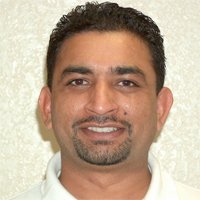I met last week with Jay Singh of Plato Networks. His official title is “Manager CAE” which makes it sound like he’s in charge of schematic capture. Isn’t CAE what we used to call what Daisy, Mentor, Valid did in the early 1980s? Anyway, what he really is responsible for is all aspects of their design methodology.
met last week with Jay Singh of Plato Networks. His official title is “Manager CAE” which makes it sound like he’s in charge of schematic capture. Isn’t CAE what we used to call what Daisy, Mentor, Valid did in the early 1980s? Anyway, what he really is responsible for is all aspects of their design methodology.
Unlike many people with such job functions, he takes his responsibility to both assess and nurture new technologies seriously, making his state-of-the-art design data available to both established companies and startups, provided they are prepared to come and camp out in his office since data that valuable isn’t going to leave the building.
This is incredibly valuable for companies that get involved. In my experience, one of the biggest headaches with a new EDA product (whether from a startup or an established company) is getting your hands on designs. If you are creating a tool for the 32nm process node, it just doesn’t do to only test it on some old 90nm designs that you happen to have lying around. You have to find a “teaching customer” who is prepared to let you get your hands on their data, which means that they will also need to give you some manpower since you also need someone who understands the design.
The biggest complaint Jay has is that after he’s done all this for the EDA company that their salespeople then completely ignore it and expect him to do an arms-length deal as if he’d never helped them mature the tool in the first place. He’s thrown out several companies (that I’ll leave nameless) both big and small despite having promising technology because their business people have been too arrogant once their engineering team has left the building having taken advantage of his data and resources to mature their product.
So which companies does he think have interesting technology? By “interesting” he doesn’t mean that they have incremental improvement to legacy tools but rather they are taking a new approach to how to address an aspect of design.
Jay has four companies on his list of potentially disruptive technology.
Firstly Oasys Design Systems. I was originally meeting Jay because he was one of the earliest users of Oasys RealTime Designer and I was going to write up his experiences for the Oasys blog (which I have done, it’s here). But somehow the 30 minute meeting we’d scheduled to talk about this turned into a 2 hour meeting talking about lots of other aspects of EDA too.
The next company is Atoptech, which is taking a new approach to place and route and in Jay’s opinion outperforms the usual suspects in the place and route space with their Aprisa product.
Berkeley Design Automation have a new approach to circuit simulation which is ten or twenty times faster than the traditional circuit simulators. They’ve also managed to do it while preserving complete compatibility with those circuit simulators: the input files are the same, the output files are the same. It’s easy to check if you are getting the same results and you don’t have to do anything extraordinary to your input to gain the speedup.
His fourth company is Analog Rails. The usual way analog has been designed is that a very experienced engineer designs the transistor level, estimating parasitics conservatively. Then, when this is complete, it is handed off to a layout technician who does the layout without really understanding any of the implications of layout decisions on parasitics. This just doesn’t work for 65nm and below. Analog Rails has automatic analog layout with on-the-fly extraction so you end up with smaller implementations faster. They also have some hilarious videos.
One interesting aspect of these four companies is that they don’t overlap at all and between them they cover pretty much the entire design creation process (except for physical verification but everyone uses Calibre anyway). If they were all in one company it would be a complete next-generation design flow.
I should point out that Plato doesn’t necessarily use all of these products in their production flow today. Like most companies, they are conservative about adopting new technology and do so in a very controlled way. But Jay is very aggressive about both evaluating and driving new technology so that it is there when he needs it.
